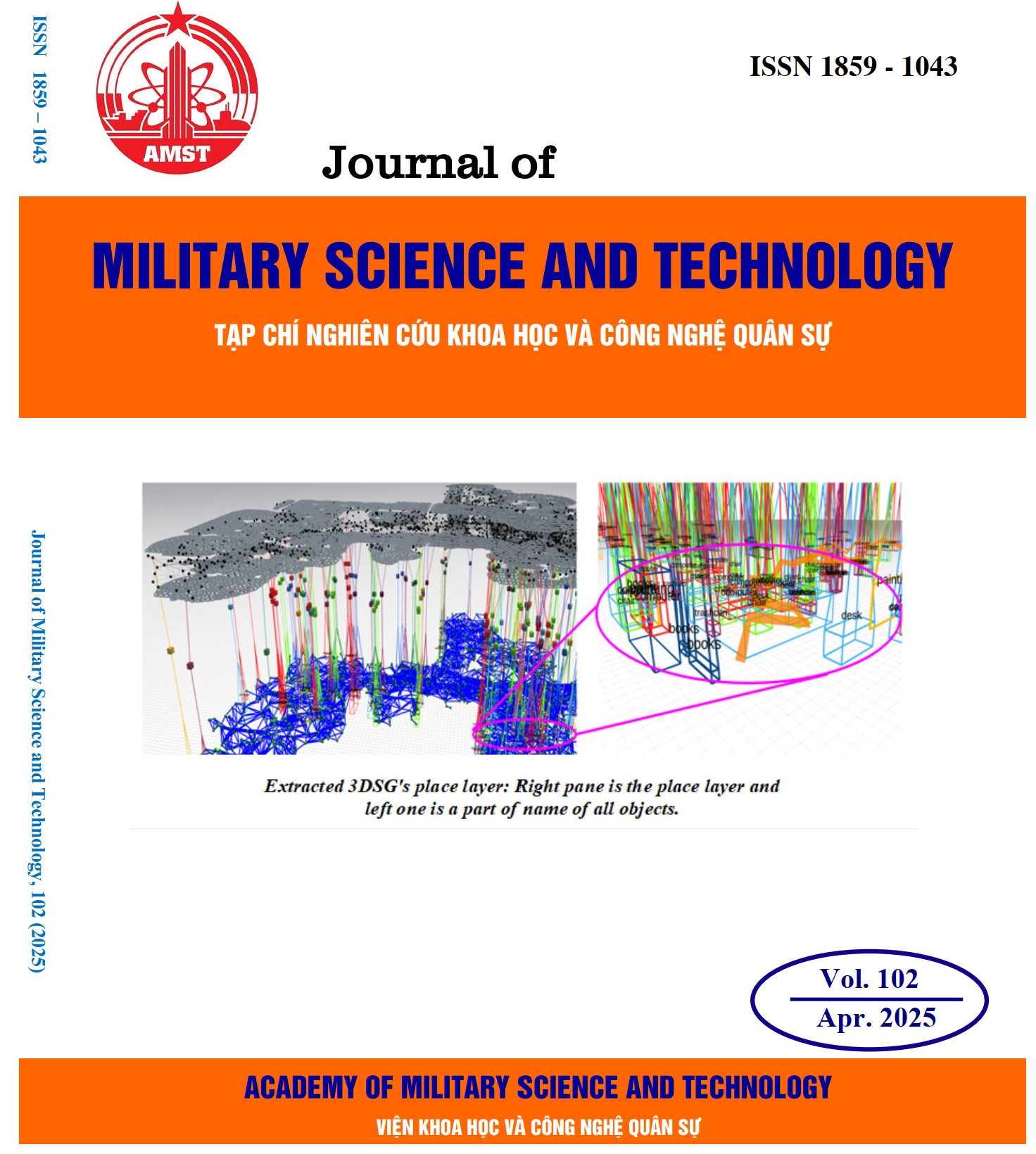Fabrication of photothermal carbon nanodot materials coated with luffa evaporation structure for solar energy water evaporation
428 viewsDOI:
https://doi.org/10.54939/1859-1043.j.mst.102.2025.118-124Keywords:
Carbon nanodots; Absorption area; Luffa; Evaporation rate.Abstract
Solar water evaporation is considered one of the most sustainable and environmentally friendly technologies. To achieve good evaporation performance, a combination of materials with good photothermal conversion efficiency and good evaporation structure is required. In this study, we used carbon nanodots as a photothermal material made that synthesis by hydrothermal of urea and citric acid. At the same time, luffa possessing advantages such as good water transport and easy attachment of carbon nanodots was chosen as the evaporation structure. The results showed that carbon nanodots material had an average size of less than 5 nm and a good absorption range in the wavelength of 200-800 nm. The absorption range of the material has expanded to the near-infrared region (NIR region), increasing the ability to absorb sunlight and convert it into heat energy, subsequently, improving the evaporation efficiency. The carbon nanodots/ luffa composite structure showed a high evaporation rate of 1.25 kg.m-2h -1 under 1 sun irradiation (1 kW.m-2).
References
[1]. Hu, Chao, et al. "Design and fabrication of carbon dots for energy conversion and storage." Chemical Society Reviews 48.8: 2315-2337, (2019). DOI: https://doi.org/10.1039/C8CS00750K
[2]. Hola, Katerina, et al. "Carbon dots—Emerging light emitters for bioimaging, cancer therapy and optoelectronics." Nano Today 9.5: 590-603, (2014). DOI: https://doi.org/10.1016/j.nantod.2014.09.004
[3]. Yuan, Fanglong, et al. "Shining carbon dots: Synthesis and biomedical and optoelectronic applications." Nano Today 11.5: 565-586, (2016). DOI: https://doi.org/10.1016/j.nantod.2016.08.006
[4]. Xu, Guiying, et al. "In vivo tumor photoacoustic imaging and photothermal therapy based on supra‐(carbon nanodots)." Advanced healthcare materials 8.2: 1800995, (2019). DOI: https://doi.org/10.1002/adhm.201800995
[5]. Shen, Yanting, et al. "Mitochondria-targeting supra-carbon dots: Enhanced photothermal therapy selective to cancer cells and their hyperthermia molecular actions." Carbon 156: 558-567, (2020). DOI: https://doi.org/10.1016/j.carbon.2019.09.079
[6]. Wang, Zhenzhen, et al. "Robust carbon-dot-based evaporator with an enlarged evaporation area for efficient solar steam generation." Journal of Materials Chemistry A 8.29: 14566-14573, (2020). DOI: https://doi.org/10.1039/D0TA05179A
[7]. Singh, Seema, Nitzan Shauloff, and Raz Jelinek. "Solar-enabled water remediation via recyclable carbon dot/hydrogel composites." ACS sustainable chemistry & engineering 7.15: 13186-13194, (2019). DOI: https://doi.org/10.1021/acssuschemeng.9b02342
[8]. Hou, Qiao, et al. "Self-assembly carbon dots for powerful solar water evaporation." Carbon 149: 556-563, (2019). DOI: https://doi.org/10.1016/j.carbon.2019.04.083
[9]. Hang, Nguyen Thi Nhat, et al. "Co-assembled hybrid of carbon nanodots and molecular fluorophores for efficient solar-driven water evaporation." Carbon 199: 462-468, (2022). DOI: https://doi.org/10.1016/j.carbon.2022.07.063
[10]. Rahmawati, Ita, et al. "Modulating Photothermal Properties of Carbon Dots through Nitrogen Incorporation Enables Efficient Solar Water Evaporation." ACS Applied Nano Materials 6.4: 2517-2526, (2023). DOI: https://doi.org/10.1021/acsanm.2c04893
[11]. Wang, Qingmiao, et al. "Recyclable Fe3O4@ Polydopamine (PDA) nanofluids for highly efficient solar evaporation." Green Energy & Environment 7.1: 35-42, (2022). DOI: https://doi.org/10.1016/j.gee.2020.07.020







